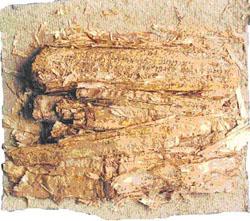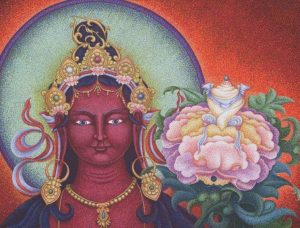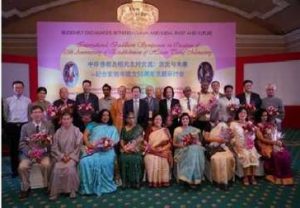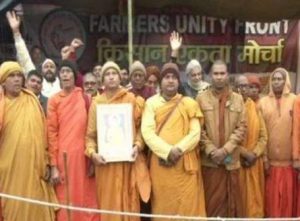“When a revelation is communicated by a supernatural entity that is reported as present during the communication, it is called a vision.”
– Michael Freze, Voices, Visions, and Apparitions (1993), p. 252
Of even deeper mystery than the puzzles of science are things that are unveiled. Theologians defend the idea of the timeless irrupting into the time-bound, but still struggle with understanding how this divine action (which should be so important as to be “meaning-changing”) squares with the purposeless march of human history. The Mahayana’s origins could be said to be even more enigmatic than our universe’s. Even the Big Bang theory is technically quantifiable and measurable via cosmological models and calculations. That is not the case for the advent of the Great Vehicle, a confusing concoction of cryptic transmissions and sectarian tension with anonymous compositions that lead nowhere. We know that the veil separating us from the knowledge of the vast cosmos of Pure Lands and infinite Buddhas in infinite atoms fell away long ago. But that is all we know. So much remains to be explored and discovered.
The Buddhologist Jan Nattier sums it up perfectly. By the beginning of the Common Era (her colleague Peter Skilling confirms that things had probably kicked off a century earlier), certain bodhisattvas and human beings emerged from deep meditation with tales of visions that would give rise to what we call the “Mahayana” worldview. They had experienced world-systems like ours throughout the ten directions, aeons and dimensions away, some in which Buddhas lived and taught. The earliest Mahayana scriptures attest to the experience of these “buddhas in the ten directions” as not of scholastic speculation but intensive meditation – insights into the Buddhas beyond. We know that these Mahayana visions were received in northwestern India, in the ancient kingdom of Gandhara (modern Pakistan and Afghanistan).



One of the largest and most ancient of Gandhari manuscripts, dating from the 1st century BCE to the 4th century, contains a nameless Mahayana sutra, famously called the Bajaur Collection for the region in Pakistan where it was found. It’s about the instruction and the prediction of future Buddhahood to 84,000 gods who will be reborn as the Buddha Viholapravha (Skt. Vipulaprabha) in a land that resembles Buddha Akshobhya’s Abhirati. And then we have the earliest Perfection of Wisdom text found to date: the nameless Gandhari Prakrit (a script and language unique to these ancient texts) Perfection of Wisdom in 8000 stanzas (Ashtasahasrika Prajnaparamita).
The earliest Mahayana texts also are unambiguous about their visionaries’ preoccupations: the Perfection of Wisdom and the pure lands that, Professor Charles Willemen argues explosively, rival schools copied from each other. But why the Perfection of Wisdom? Why the pure lands? There were obviously many more visions being had during this formative period, but it is striking that prajnaparamita and buddhasektra are critical concepts in Mahayana Buddhism. Heuman was right: trying to follow a Buddhist text to its origins is akin to following a trail of breadcrumbs that suddenly stops. There is no competing transmission that can be traced back to a single root. The single authentic and original Buddhist canon (be it verbal utterance from the Buddha himself, or the moment the sutras were first written down) is physically lost. From the get go, there were different transmissions about the Buddha’s original teachings. And to Professor Charles Willemen, the awareness of competing schools’ differences about each other’s differences ironically led to them being subsumed under the umbrella term “Mahayana”.
Revelation is mysterious because the unveiling of supernatural insight or higher truths is not up to us: it is initiated completely by the other party on their terms. Even if one allows that the Buddha attained enlightenment by his own efforts – and many masters through history did – they needed to transmit this rediscovered reality to us. The famous image of an ancient path through the forest is apt here: a road walked by the ancients since time out of mind, obscured by the overgrown foliage that have grown and covered the footprints of Buddhas long past. It seems, thanks to the tireless, devoted, and difficult work done by both Buddhist and non-affiliated scholars, that the supernatural face beyond the fallen veil is no longer so blinding.
Revelations of interest
· Jan Nattier, “The Indian Roots of Pure Land Buddhism: Insights from the Oldest Chinese Versions of the Larger Sukhavativyuha”. Pacific World, 179 – 201
· Linda Heuman, “Whose Buddhism is Truest?” Tricycle, Summer 2011, 46 – 51; 108 – 109.Peter Skilling. “Vaidalya, Mahayana, and Bodhisattva in India: An Essay towards Historical Understanding”. In The Bodhisattva Ideal: Essays on the Emergence of Mahayana.












